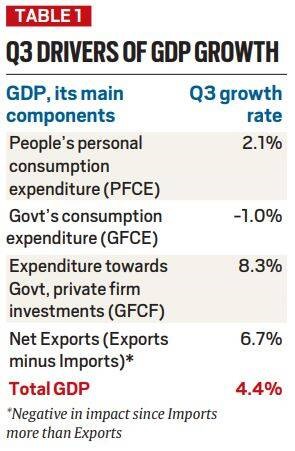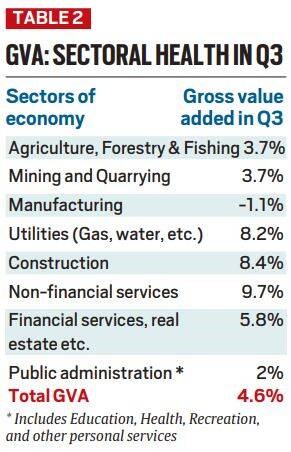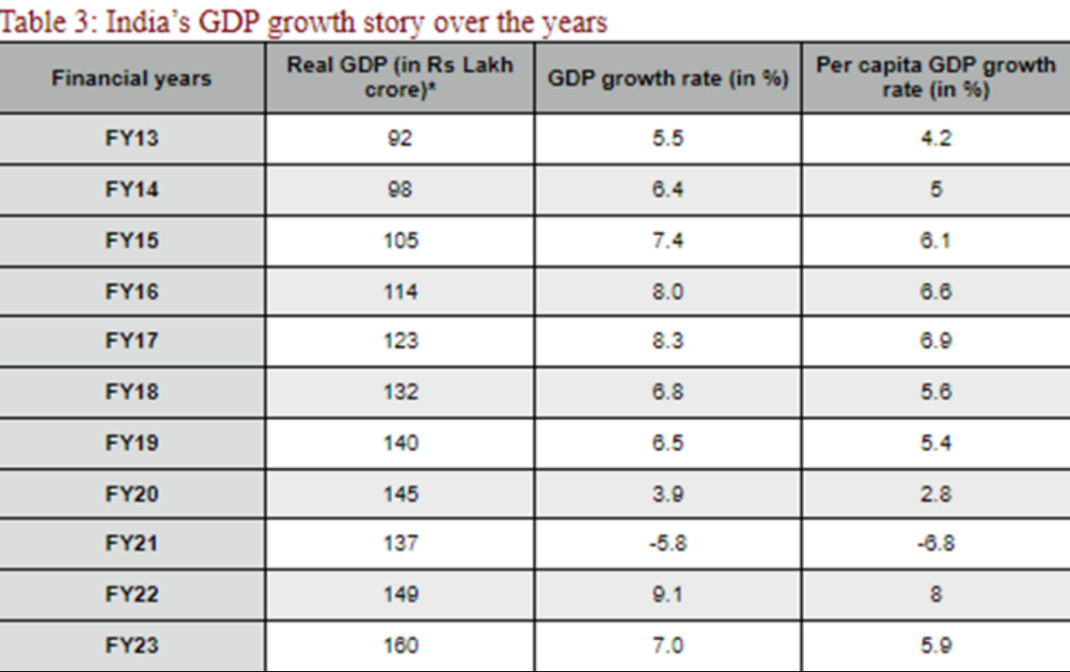Free Courses Sale ends Soon, Get It Now


Free Courses Sale ends Soon, Get It Now



Disclaimer: Copyright infringement not intended.
Context
Details
What are GDP and GVA?
Under GDP, there are four main heads:
What does the data for Q3 show?


Revised estimates for the past years

Outlook
Read about: https://www.iasgyan.in/daily-current-affairs/national-statistical-office-nso-data
|
PRACTICE QUESTION Q) Which of the following statements is/are correct? a. Gross Fixed Capital Formation (GFCF) or the money spent by private firms and governments towards building productive capacities (investments). b. National Statistical Commission (NSC) of India is an autonomous body which formed in June 2005 under the recommendation of Rangarajan commission. I. Only a II. Only b III. Both a and b IV. Neither a nor b Answer: Option III |
© 2024 iasgyan. All right reserved